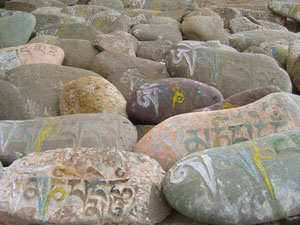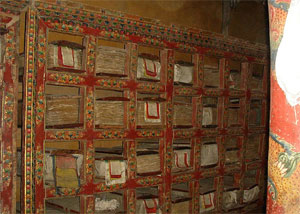|
|
|
Ladakh History |
|
|
|
The region of Ladakh once
formed part of the erstwhile Kingdom of Ladakh and for nearly
900 years from the middle of the 10th century existed as an
independent kingdom. Its dynasties descended from the king of
old Tibet. After 1531, it was periodically attacked by the
Muslims from Kashmir, until it was finally annexed to Kashmir
in the mid 19th century. The early colonizers of Ladakh
included the Indo-Aryan Mons from across the Himalayan range,
the Darads from the extreme western Himalayas, and the nomads
from the Tibetan highlands. While Mons are believed to have
carried north-Indian Buddhism to these highland valleys, the
Darads and Baltis of the lower Indus Valley are credited with
the introduction of farming and the Tibetans with the
tradition of herding. Its valleys, by virtue of their
contiguity with Kashmir, Kishtwar and Kulu, served as the
initial receptacles of successive ethnic and cultural waves
emanating from across the Great Himalayan range.
|
|
|
|
Its political fortunes
flowed over the centuries, and the kingdom, was at its
best in the early 17th century under the famous king
Sengge Namgyal, whose rule extended across Spiti and
western Tibet up to the Mayumla beyond the sacred sites
of Mount Kailash and Lake Mansarovar. During this period
Ladakh became recognized as the best trade route between
the Punjab and Central Asia. The merchants and pilgrims
who made up the majority of travellers during this
period of time, travelled on foot or horseback,
|
 |
|
|
taking about 16 days to
reach Srinagar, although the people riding non-stop and with
changes of horse all along the route, could do it in as little
as three days. These merchants who deal in textiles and
spices, raw silk and carpets, dyestuffs and narcotics,
transported their goods on pony who took about two months to
carry them from Amritsar to the Central Asian towns of Yarkand
and Knotan. On this long route, Leh was the half-way house,
and developed into a bustling entreport, its bazaars thronged
with merchants from far countries. This was before the wheel
as a means of transport was introduced into Ladakh, which
happened only when the Srinagar-Leh motor-road was constructed
as recently as the early 1960s. |
|
|
|
The 434 km
Srinagar-Leh highway follows the historic trade route,
thus giving travellers a glimpse of villages that are
historically and culturally important. The famous pashm
(better known as cashmere) was produced in the high
altitudes of eastern Ladakh and western Tibet and
transported thorough Leh to Srinagar where skilled
artisans transformed it into shawls which are known all
over the world for their softness and warmth.
Ironically, it was this lucrative trade, that finally
spelt |
 |
|
|
the doom of the independent
kingdom. It attracted the covetous gaze of Gulab Singh, the
ruler of Jammu in the early 19th century, and in 1834, he sent
his general Zorawar Singh to invade Ladakh. Hence, followed a
decade of war and turmoil, which ended with the emergence of
the British as the paramount power in north India. Ladakh,
together with the neighbouring province of Baltistan, was
incorporated into the newly created State of Jammu & Kashmir.
Just over a century later, this union was disturbed by the
partition of India, Baltistan becoming part of Pakistan, while
Ladakh remained in India as part of the State of Jammu and
Kashmir. |
|